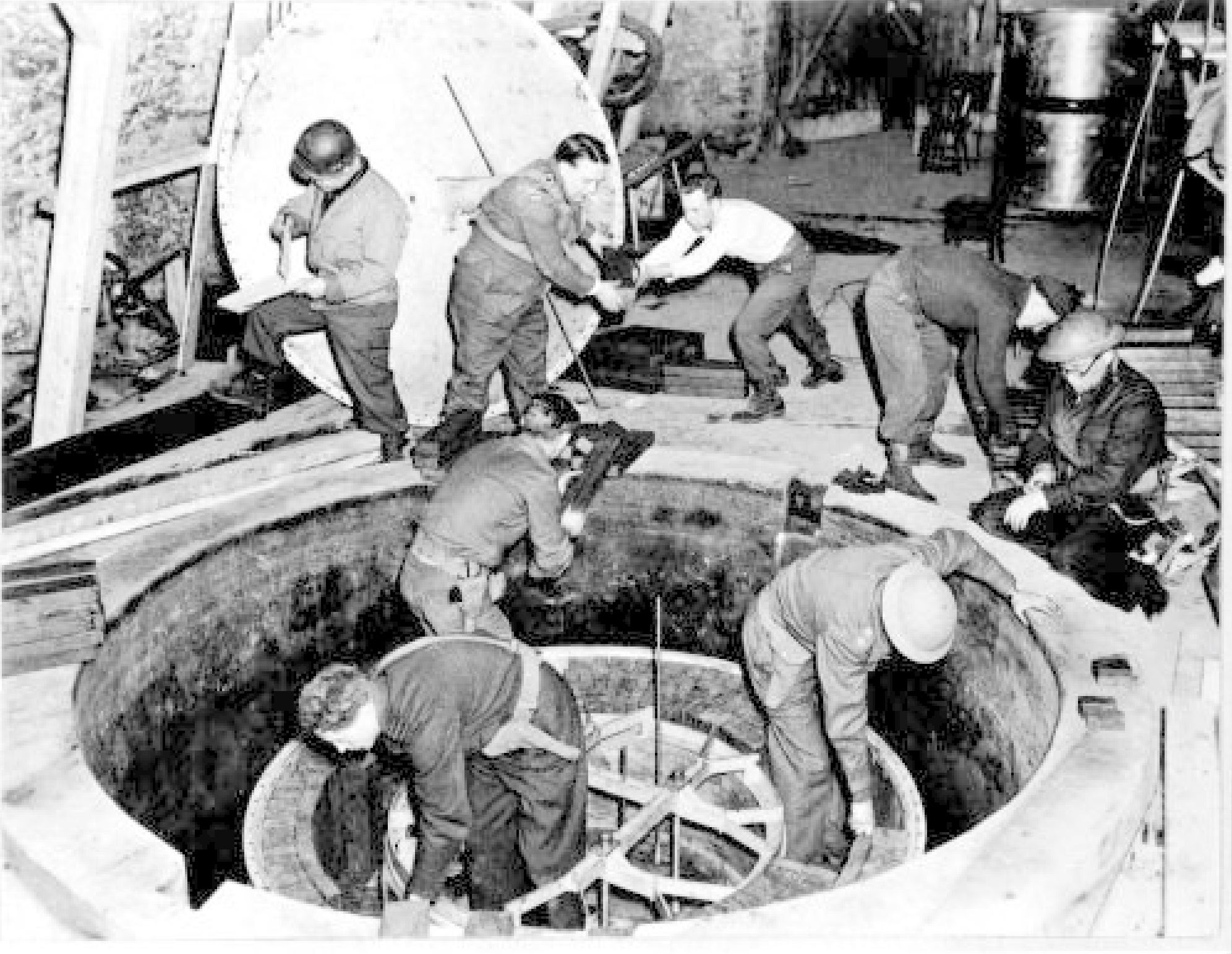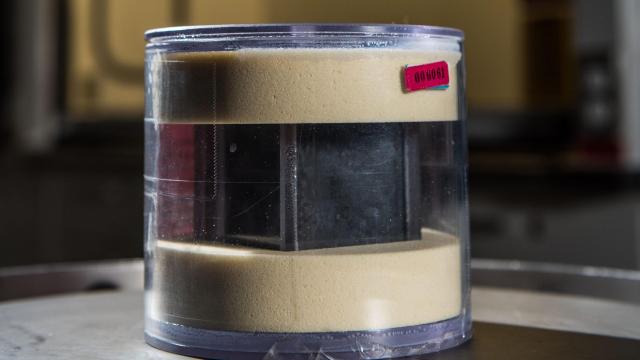A research team based at the Pacific Northwest National Laboratory in Washington is working to certify that mysterious uranium cubes in American laboratories were once part of Nazi Germany’s efforts to build a successful nuclear program. Using nuclear forensics, the team might be getting closer to determining the provenance of the radioactive cubes — as of yet, no one is even sure how most of them got to where they are today.
The team’s research was presented today at a meeting of the American Chemical Society. From 1939 through 1945, the Nazis had their own nuclear program. There were two Nazi research groups — one run by Werner Heisenberg and another led by Kurt Diebner — that designed and built nuclear reactors with the hope of making an atomic bomb. After the war, many of the cubes were shipped to the United States, where they disseminated into universities and private ownership, through formal and informal channels.
The cubes generally lack a solid provenance history — that is, people didn’t really keep track of every hand they passed through and when. The current team suspects that there were once between 1,000 and 1,200 of the cubes in the Nazi reactors, but roughly 12 are known today; now, the team wants to figure out the origin of a cube in Washington State, as well as a few others.
“We don’t know for a fact that the cubes are from the German program, so first we want to establish that. Then we want to compare the different cubes to see if we can classify them according to the particular research group that created them,” said Jon Schwantes, the project’s principal investigator, in an American Chemical Society release.
The German scientists’ work was focused on nuclear fission, the process by which a heavy nucleus is destabilised by a bombardment of neutrons, forcing the nucleus to decay along with a release of energy. Heisenberg’s group hoped that they could incite a bunch of uranium submerged in heavy water to create plutonium for use in an atom bomb. The Nazi reactor cubes, which were about 2 inches on each side, were hung from cables in a three-dimensional lattice under the water; fortunately, the design failed.
And then they ran out of time. In 1945, British and American forces confiscated some of the uranium cubes involved in the German experiments and shipped over 600 of them to the United States. Some of the uranium has since vanished. Others, like the one in Washington, have dubious provenance. The one at the University of Maryland came with an intriguing note, as reported in 2019 by collaborators on the current project. The note simply stated “Taken from the reactor that Hitler tried to build. Gift of Ninninger.” Nininger (his name misspelled in the note) was an interim manager of a Manhattan Project site in Murray Hill, Manhattan, and he gave a cube he likely acquired on the job to a friend, who gave it to another friend, who gifted it to current project collaborator Timothy Koeth for his birthday.

The research team is using radiochronometry, which measures radioactive materials and the stuff they decay into, to determine the age of three cubes. Since the uranium cubes have been decaying since they were cast, they now contain amounts of thorium and protactinium.
Brittany Robertson, a chemist at the Pacific Northwest National Laboratory and a collaborator on the recent research, is applying a radiochronometric method that will be able to identify each element in a cube and its relative concentration, which may tell researchers when the cube was made. On top of that, impurities in the cube might give up traces of other rare-earth elements, which may indicate where the original uranium was mined.
“Our first objective will simply be to confirm the pedigree of the three cubes we are measuring, where the expected age of that material should come out to be the early- to mid-1940s,” Schwantes told Gizmodo in an email. “If our age dating method is extremely precise, it might also be possible to determine if these cubes originated from Heisenberg’s program or Diebner’s program, since their fabrication dates were slightly different (by about 1 year).”
Radiochronometry works on short timelines, which allows the researchers to understand what the cubes were like in the 1940s. They are not certain whether some of the cubes belonged to Heisenberg’s lab or Diebner’s (or neither, though that seems unlikely). While tracking the cube’s origin down to its lab is a “stretch goal,” Schwantes said, the team should be able to at least confirm that the cubes are of Nazi origin — something they assume to be true but until now lacked the means to verify.
